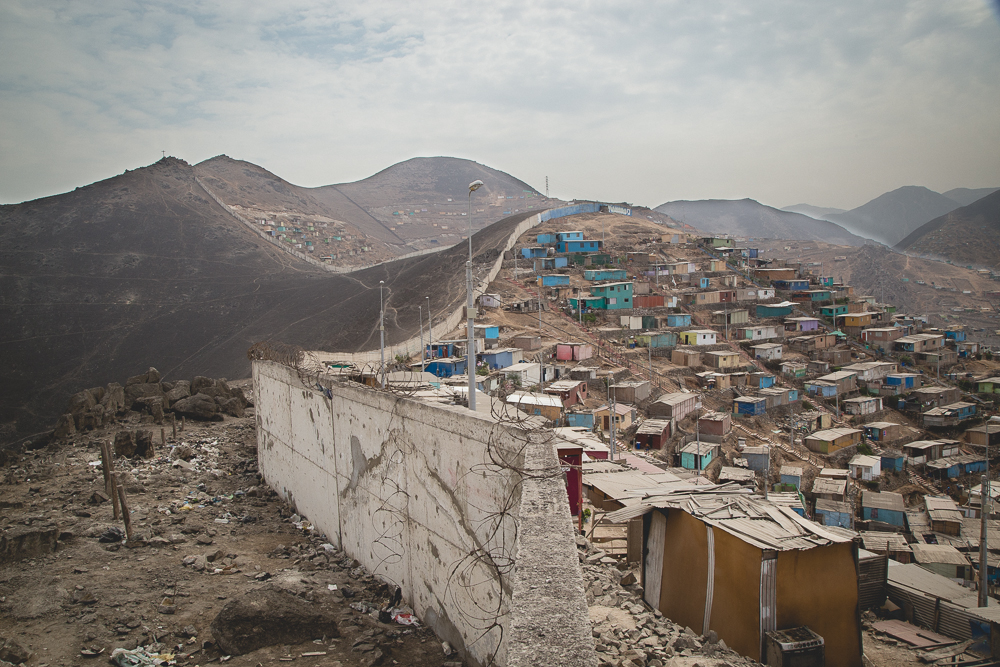In the hills, high above the city center of Lima, Peru, sits the community of Nadine Heredia. One of Lima’s Pueblos Jovenes, or young towns, people began to settle in the area in 2012 and now there are an estimated 350 families living there.
Lima is surrounded by informal communities, like Nadine Heredia, without land titles and thus without recognition from the government and legal access to public electricity and water. However, Nadine Heredia sticks out as a dramatic example of the city’s stark divide between rich and poor because it sits along what has been dubbed the “Wall of Shame”.
The wall was built about 30 years ago by those living below in the wealthier area of Santiago de Surco to divide themselves and their poorer neighbors. The wall has been covered by Peruvian media as well as internationally. The dramatic view from the top works as an all too provocative visual metaphor for the divide between the rich and poor of Lima.
Living up in Nadine means no access to a public water supply. Fabiola Rosales Bartolo, a resident who has lived in Nadine for 3 years says she pays around 200 soles, about $60 USD, a month for water for her family.
“We pay much more for water than people that live on the other side,” Bartolo said. “I have a baby and it lasts for a week because I have to wash clothes, I have to cook.”
Oxfam estimates that those living without access to SEDAPAL, Lima’s public water supply, pay up to 10 times as those with access, a case where it truly is expensive to be poor.
Life for residents in Nadine Heredia and communities like it reflects the informality of the town itself. Houses spring up on land not formally owned by those who live there. Water deliveries can be infrequent and unpredictable. Most residents make their money in an informal economy by selling goods and services on the streets.
In Nadine Heredia, this life is all lived with a view of the paved, tree-lined streets of Lima’s wealthier districts. However, from below, you can only see a wall.
“Here we can look at the other side of a comfortable life,” Bartolo said. “There is a big difference between the rich and the poor. The wall separates us from the people that have. More than anything it shows you the reality of our country.”


